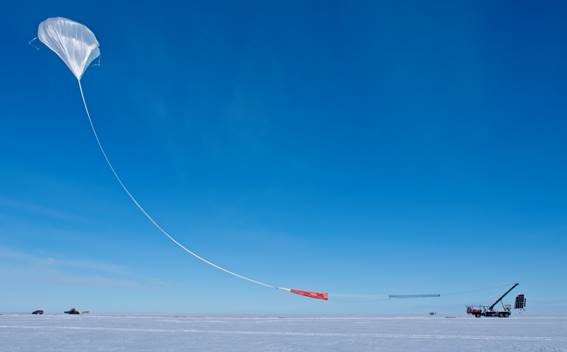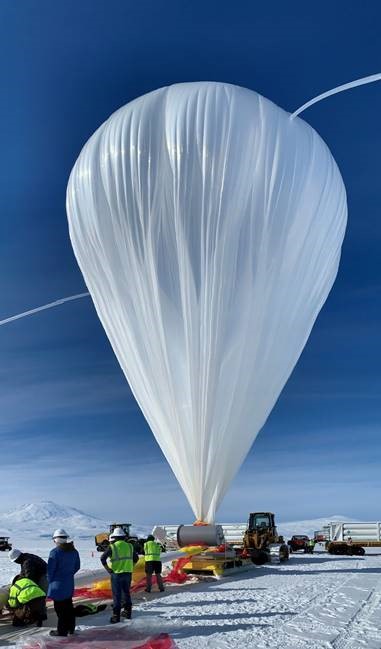It's a Team Effort to Launch a 940-Foot-Tall BalloonPosted January 19, 2024
On December 31, 2023, the NASA Scientific Balloon Program, with logistics support from the U.S. National Science Foundation’s United States Antarctic Program (USAP), launched the Galactic / Extragalactic ULDB Spectroscopic Terahertz Observatory (GUSTO). GUSTO, funded by the NASA Explorers Program, will study the full life cycle of the interstellar medium, the gas and dust from which all stars and planets are formed. Launching a balloon that is 940-feet tall at launch is no easy task. It takes teams of scientists, experts, engineers, technicians and support staff from NASA and the USAP. To get the project off the ground (pun intended) takes months of preparation and starts with staff preparing the LDB complex and facilities, located nine miles from McMurdo Station. The ski-equipped structures are some of the tallest in Antarctica, and it requires a major effort to prepare the infrastructure after winter storms partially bury equipment and structures each season. By the end of each October, more than 23 different subject matter experts, a dedicated support staff, and a finely tuned annual plan ensure that equipment is moved into place and all the supporting facilities are made operational. Once the power and heat are on, the science teams arrive to integrate payloads and prepare for flight by early December, when the circumpolar winds are optimum for launch. Each year’s unique LDB launch brings new challenges, and the GUSTO payload was no different. Due to the specific design of the GUSTO shipping container, it could not be delivered to McMurdo Station via the standard C-17 airlift. Instead, NASA used its C-130 aircraft to deliver the payload, while the New York Air National Guard LC-130 brought in components from New Zealand. With everything in place, it’s time for launch! As of publication, the balloon carrying the GUSTO payload is floating at the edge of space, 120,000 feet above Antarctica. The balloon and the far-infrared telescope and cryogenic instrument it carries will remain airborne for 56 to 100 days, weather permitting, mapping large portions of the Milky Way Galaxy and the Large Magellanic Cloud. |



For USAP Participants |
For The Public |
For Researchers and EducatorsContact UsNational Science FoundationOffice of Polar Programs Geosciences Directorate 2415 Eisenhower Avenue, Suite W7100 Alexandria, VA 22314 Sign up for the NSF Office of Polar Programs newsletter and events. Feedback Form |



